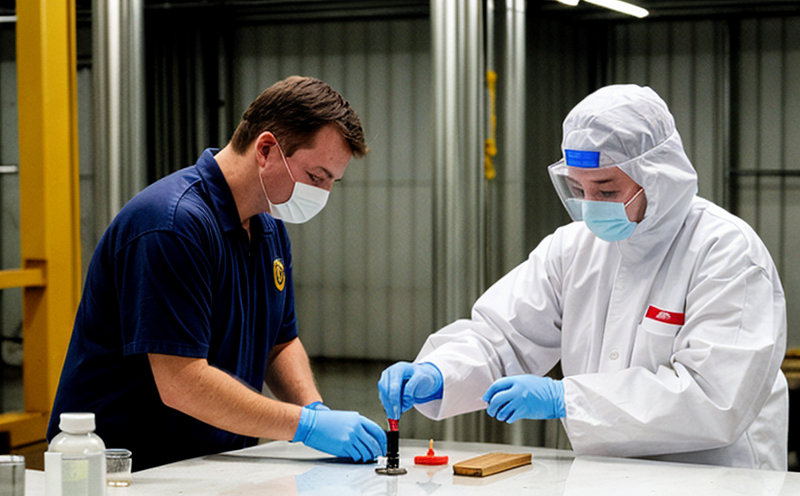ISTA 6-Full Distribution Climate Simulation
The ISTA 6-Full Distribution Climate Simulation is a comprehensive testing protocol designed to ensure that packaging materials can withstand the harsh and varied environmental conditions experienced during full-scale distribution cycles. This test simulates real-world scenarios, including temperature fluctuations, humidity variations, and mechanical stresses such as drops, impacts, and vibrations.
The primary objective of ISTA 6 is to identify potential weaknesses in packaging design early on, thereby preventing costly damage to products during transit or storage. By replicating the most challenging conditions encountered by packages traveling through distribution channels, this test ensures that materials are robust enough to protect contents against physical and environmental factors.
The test protocol consists of multiple steps aimed at evaluating how well a package can endure various climatic conditions. These include exposure to extreme temperatures ranging from freezing cold to scorching heat, along with changes in humidity levels. Additionally, the test simulates transportation modes such as trucks, ships, and airplanes, which often involve rough handling and unpredictable environments.
During ISTA 6 testing, specimens are subjected to controlled cycles of temperature change, relative humidity swings, and simulated shipping conditions. The duration and intensity of these exposures vary depending on specific product requirements but typically encompass a wide range of environmental extremes. This ensures that any potential issues with the packaging can be identified before actual shipments occur.
Accurate specimen preparation is crucial for reliable results from ISTA 6 testing. Samples must represent typical packaging configurations used in distribution, including corrugated boxes, cartons, and other container types. Prior to testing, specimens undergo rigorous quality checks to ensure uniformity across all samples being tested simultaneously. Proper conditioning of the specimens according to established guidelines is also essential; this involves acclimating them to standard temperature and humidity levels prior to exposure to test conditions.
The instrumentation required for ISTA 6 tests includes specialized chambers capable of maintaining precise control over temperature, humidity, and other parameters throughout each cycle. High-speed cameras or other recording devices may be used to monitor specimen behavior during mechanical stress phases like drops or impacts. Data loggers provide continuous monitoring of environmental factors within the chamber.
Upon completion of testing cycles, detailed reports are generated summarizing performance metrics for each test condition applied. These documents serve as valuable tools for quality managers and compliance officers in making informed decisions regarding packaging improvements based on empirical evidence gathered during tests.
| Critical Environmental Factors | Test Duration & Intensity |
|---|---|
| Temperature Extremes (Freezing to 50°C) | Multiple cycles, varying durations |
| Humidity Swings (10%RH - 98%RH) | Varying humidity levels during each cycle |
| Mechanical Stress (Drops, Impacts) | Simulated via high-speed cameras or impact testers |
| Shipping Modes (Trucks, Ships, Airplanes) | Reproduced using controlled environments and oscillation tables |
Customer Impact and Satisfaction
The ISTA 6-Full Distribution Climate Simulation plays a pivotal role in enhancing customer satisfaction by ensuring that products reach their destinations in pristine condition. By identifying packaging deficiencies early on through rigorous testing, companies can take corrective actions to improve product protection before mass production begins.
For quality managers and compliance officers responsible for maintaining high standards of service delivery, ISTA 6 helps streamline the process of selecting appropriate packaging materials that meet both internal and external specifications. This reduces the likelihood of costly returns or damaged goods upon arrival at retail locations or end consumers.
R&D engineers benefit significantly from ISTA 6 testing as it provides valuable insights into how different material combinations behave under specific environmental stresses. This knowledge enables them to innovate more effective packaging solutions tailored specifically for particular product types and distribution routes.
From a procurement perspective, ISTA 6 ensures that suppliers are delivering consistent quality products that comply with international standards set forth by organizations like ISO, ASTM, EN, IEC, etc. This fosters long-term partnerships based on mutual trust and shared commitment to excellence in supply chain management.
International Acceptance and Recognition
The ISTA 6-Full Distribution Climate Simulation has gained widespread acceptance across industries worldwide due to its stringent requirements and proven effectiveness in assessing packaging performance under challenging conditions. Many leading corporations have incorporated ISTA into their quality assurance programs, recognizing its value in maintaining high standards of product protection during distribution.
International organizations such as ISO (International Organization for Standardization) and ASTM International have recognized ISTA's methodologies, further validating the reliability and relevance of these tests globally. Compliance with ISTA protocols is often seen as an indicator of a company’s dedication to excellence in packaging design and quality control.
In regions like Europe, where stringent regulations govern product safety and environmental impact, compliance with ISTA 6 standards is increasingly becoming mandatory rather than optional. This trend reflects growing awareness among governments and consumers about the importance of sustainable practices throughout manufacturing processes.
Use Cases and Application Examples
- Evaluating the durability of corrugated boxes used in shipping delicate electronics
- Determining the adequacy of foam inserts for protecting fragile glassware during transit
- Testing the impact resistance of plastic containers containing perishable goods like fruits
- Assessing the effectiveness of reinforced paperboard cartons for bulk shipments of construction materials
| Critical Factors | Test Conditions |
|---|---|
| Temperature Extremes | -20°C to 50°C with controlled humidity variations |
| Humidity Swings | 10%RH to 98%RH, depending on product type |
| Mechanical Stress | Drops from heights of up to 1.5 meters onto hard surfaces |
| Shipping Modes | Simulated using oscillation tables and controlled environmental chambers |





